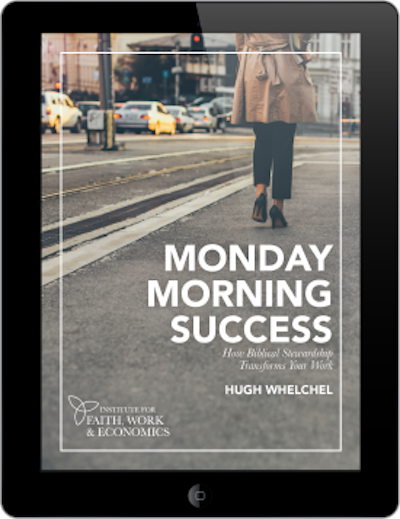You could hear a pin drop in the office as Katherine Goble stood dripping wet from having to run a half mile in the rain in the middle of her workday. Why? It was the early 1960s and Katherine Goble, an African American mathematician, worked for NASA, which still had “colored bathrooms” in parts of its campus. There were none of those in her building, only on the other side of the NASA campus.
It’s perhaps the most powerful scene in Hidden Figures, 2017’s triple Oscar-nominated film depicting the lives of three black female mathematicians who made significant contributions to the aeronautics and space programs at the height of the race to space.
In the scene, Katherine (played by Taraji P. Henson) is questioned by the head of the Space Task Group, Al Harrison (played by Kevin Costner), as to her whereabouts during her 40-minute trip to the bathroom.
The next scene, which the clip above does not include, is worth watching as well because it depicts the proper response to racism: repentance and action. Al Harrison is so moved by Katherine’s experience that he uses a sledgehammer to take down the sign to the “Colored Ladies Room” and instructs the administrators, “No more colored restrooms…here at NASA, we all pee the same color.”
(Note: Although there are some historical inaccuracies in Hidden Figures, the film still seeks to faithfully portray that era).
Today is Martin Luther King, Jr. Day, an opportunity to remember and celebrate a man who devoted his life to ending “colored restrooms” and every ugly form of racial discrimination across America. It’s a day to watch movies like Hidden Figures and remember the noble struggle of those like Katherine Goble Johnson, Mary Jackson, and Dorothy Vaughan at NASA in the 1950s’ and 60s’ segregated South.
King demonstrated that societal change doesn’t come about just through talk or good feelings. It takes effort. In his 1963, “I Have a Dream” speech, he said,
Change does not roll in on the wheels of inevitability, but comes through continuous struggle.
In 2018, some would say we are two steps forward/one step back in the pursuit of King’s dream. However, the discussion of the topic within the body of Christ is growing.
Racial Reconciliation and Biblical Shalom
David Whitlock, president of Oklahoma Baptist University, writes that racial reconciliation must be pursued because it’s a picture of biblical shalom. He quotes from a speech made on campus by OBU’s Stan Norman:
Reconciliation with God brings reconciliation with one another. You cannot have one without the other. In fact, the biblical witness is that the reality of reconciliation with God is demonstrated by the reality of reconciliation among his people…Racial barriers and hostilities are a festering wound in the body of Christ. The perversion of both active and passive racism must be confronted and removed.
Whitlock and Norman are right. We must continue to actively pursue racial reconciliation because racism has nothing to do with shalom, and shalom is what we all were made for.
Hugh Whelchel points out that while shalom is translated in our English Bibles as “peace,” it means much more than that:
Shalom denotes a right relationship with God, with others, and with God’s good creation. It is the way God intended things to be when he created the universe.
Among other things, shalom means salvation, wholeness, integrity, soundness, community, connectedness, righteousness, justice, and well-being.
God made us to enjoy shalom and yet, because of the fall, we don’t experience it—not in our relationship with God or others. Our sin has driven shalom far away from us. We are starved for it. But God, in his grace, has set a course to reweave shalom in his creation and has been about this task since Genesis 3:15 after the fall of Adam and Eve. As Whelchel writes, “restoration of shalom is his design in redemption.” Christ is our King of shalom.
Our Call to Reweave Shalom
Yet, we are not to just passively talk about the reweaving of shalom. Just as Dr. King called a nation not to sit idly by and hope that change would come, we, as Christians, are called to actively seek shalom, remembering we are empowered by the Holy Spirit and confident in Christ’s ultimate restoration of shalom.
Whelchel writes that co-laboring with the Lord in his plan to reweave shalom is something we can do every day through our work:
Understanding shalom is the key to realizing how God intends to use the work of our hands in the restoration of his creation.
Shalom is not just a restoration of right relationships with God and others, it’s having the freedom to live fully into our God-given design. The real-life women depicted in Hidden Figures gave the world a taste of shalom through the work of their hands. Even struggling through racism and segregation, they endeavored to answer the calling God had put on their hearts to be mathematicians (and more) and in doing so, blessed the world around them. How much more could they have flourished in a world where shalom was more visibly present?
None of us will ever fully experience shalom this side of heaven. But we can long for it, strive for it, and with God’s help reweave it into the families, communities, churches, and workplaces of our lives. When Christ comes, no figure will be “hidden” or pushed aside. Men and women of every race, nation, tribe, and color will stand before the King and perfect shalom will be revealed.
 Editor’s note: Read more about God’s plan to reweave shalom in All Things New: Rediscovering the Four-Chapter Gospel.
Editor’s note: Read more about God’s plan to reweave shalom in All Things New: Rediscovering the Four-Chapter Gospel.
Help spread this encouraging message of God’s purpose in our work to more people! Support IFWE today.
